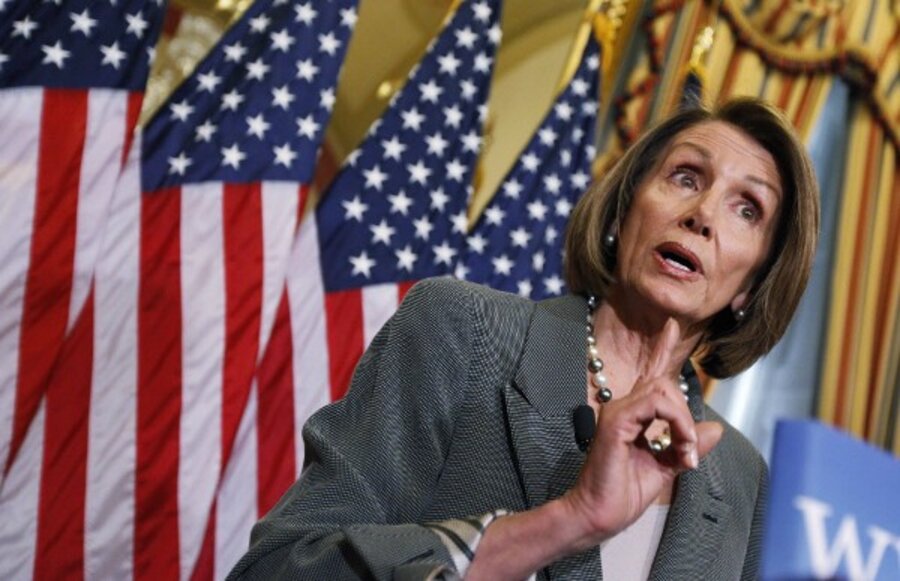Healthcare reform: 'Fixes' to bills are first major hurdle
Loading...
| Washington
With a White House target date of March 18, House Democrats are scrambling to find a majority to vote for the Senate’s healthcare bill – with “fixes.”
The fixes are the first, essential step toward meeting that target. House leaders say they are close to an agreement on a package of discreet policies to bridge the gap between House and Senate bills.
“We are close to an agreement on the fixes,” says Nadeam Elshami, a spokesman for House Speaker Nancy Pelosi.
Funding a key stumbling block
A key stumbling block has been the funding mechanism. The Senate bill is financed largely by a tax on relatively expensive health insurance plans. Labor unions, who deferred pay increases in favor of more generous health plans, strongly oppose that funding plan and are heavily lobbying House members to change it. (Monitor report: Three ways the House may derail Obama's plans)
Speaker Pelosi says that 80 percent of taxation on the so-called Cadillac plan has been eliminated. The House is also pushing to repeal a provision added by Sen. Ben Nelson (D) of Nebraska that exempted his state from paying to expand access to Medicaid. Negotiators are also working on ways to make healthcare more affordable for the middle class.
“When I talk to my members, I have to have two important pieces of information: One is, what is the final status of the bill? And two, what is the Senate going to do about it?” said Speaker Pelosi at a briefing on Thursday. “What we’re showing them is that in the legislative process, the substance has moved much closer to the House.”
There is also strong resistance to the Senate bill’s language on the federal funding of abortion. Rep. Bart Stupak (D) of Michigan says that there are at least a dozen House Democrats who voted for the House health reform bill who are willing to vote against the Senate bill and fixes
unless that language, too, is fixed.
“There is no change in the access to abortion, no more or no less,” said Speaker Pelosi. “We will pass the bill.”
CBO to study financial impact
After a deal is finalized, the package of fixes will be sent to the Congressional Budget Office to be scored on its impact on the federal budget deficit. President Obama pledged that healthcare reform would not add a dime to the federal deficit – a pledge essential to win support of conservative House Democrats. (Monitor blogger: February jobs report makes healthcare reform harder but more important)
“We really can’t move forward until we have a CBO score,” says spokesman Elshami.
Even with agreement between House and Senate negotiators, there are formidable obstacles to getting a bill to the president’s desk this month. One is how to assure House members – who will vote first – that the Senate will also pass the “fixes” as negotiated.
“Some kind of explicit assurances would be needed,” says Ralph Neas, CEO of the National Coalition on Healthcare, which is lobbying for reform, possibly a letter from Senate leaders to the House.
If House members are convinced that the negotiated fixes will be voted in the Senate, the next step is to pass the Senate bill and the fixes. The Senate would then pass the fixes through a “reconciliation” procedure requiring only a majority vote.
“Relatively speaking, it’s a small part of the bill,” says Neas, referring to the package of fixes. “President Obama would sign two bills at about the same time: the Senate-passed bill and the corrections bill.”
The procedural hurdles are as formidable as the political challenge of coming to terms on fixes. But first: the fixes.





